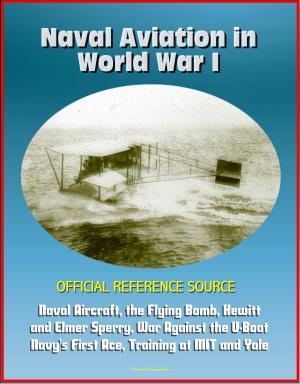Airpower Myths and Facts: World War II, Vietnam - Effectiveness of Bombing, Usage of the Atomic Bomb on Japan at Hiroshima and Nagasaki, Strategic Bombing
Nonfiction, History, Military, Nuclear Warfare, Aviation| Author: | Progressive Management | ISBN: | 9781301477456 |
| Publisher: | Progressive Management | Publication: | February 16, 2013 |
| Imprint: | Smashwords Edition | Language: | English |
| Author: | Progressive Management |
| ISBN: | 9781301477456 |
| Publisher: | Progressive Management |
| Publication: | February 16, 2013 |
| Imprint: | Smashwords Edition |
| Language: | English |
This unique book examines a number of common myths and misconceptions about the effectiveness of airpower. Contents include:
Chapter 1 - Between the world wars, even though the US Army Air Corps received more than its fair share of funds from the Army, it continued to complain, agitate, and ask for more. * Chapter 2 - Entering World War II, the Air Corps' unbalanced doctrine and force structure leaned too heavily towards strategic bombing. Thus, air support of ground forces was inadequate and largely ignored by airmen. * Chapter 3 - The Air Corps entered World War II with a "Douhetian" concept of air war that emphasized area bombing and the waging of war on women and children * Chapter 4 - Airmen thought they could win the war alone * Chapter 5 - The fact that German production, especially of aircraft, continued to increase throughout 1944 proves that the Combined Bomber Offensive (CBO) was ineffective and that the resources devoted to it would have been better spent elsewhere * Chapter 6 - Bombing was ineffective because it actually stiffened rather than lowered enemy morale. * Chapter 7 - The atomic bombs were unnecessary because Japan was about to surrender; even if it had not given up, an invasion or continued blockade would have been more humane * Chapter 8 - Overall, strategic bombing was a wasted effort that produced only minor effects * Chapter 9 - Airpower was a failure in Vietnam, losing the war and letting the Army down. Why even have an Air Force if it can't beat a fourth-rate power like North Vietnam? * Chapter 10 - Strategic bombing failed in Vietnam because Rolling Thunder did not break the will of Ho Chi Minh and his cohorts to continue the war in the south * Chapter 11 - Airpower was an indiscriminate weapon that killed excessive numbers of Vietnamese civilians * Chapter 12 - Too focused on strategic attack during the Persian Gulf War, the Air Force provided inadequate support to ground forces. * Chapter 13 - Air attack is nothing more than "recreational bombing"; pilots fly so high they can't possibly hit their targets accurately * Chapter 14 - Despite all the talk by airmen, the employment of airpower remains an indiscriminate use of military force that deliberately targets civilians
This unique book examines a number of common myths and misconceptions about the effectiveness of airpower. Contents include:
Chapter 1 - Between the world wars, even though the US Army Air Corps received more than its fair share of funds from the Army, it continued to complain, agitate, and ask for more. * Chapter 2 - Entering World War II, the Air Corps' unbalanced doctrine and force structure leaned too heavily towards strategic bombing. Thus, air support of ground forces was inadequate and largely ignored by airmen. * Chapter 3 - The Air Corps entered World War II with a "Douhetian" concept of air war that emphasized area bombing and the waging of war on women and children * Chapter 4 - Airmen thought they could win the war alone * Chapter 5 - The fact that German production, especially of aircraft, continued to increase throughout 1944 proves that the Combined Bomber Offensive (CBO) was ineffective and that the resources devoted to it would have been better spent elsewhere * Chapter 6 - Bombing was ineffective because it actually stiffened rather than lowered enemy morale. * Chapter 7 - The atomic bombs were unnecessary because Japan was about to surrender; even if it had not given up, an invasion or continued blockade would have been more humane * Chapter 8 - Overall, strategic bombing was a wasted effort that produced only minor effects * Chapter 9 - Airpower was a failure in Vietnam, losing the war and letting the Army down. Why even have an Air Force if it can't beat a fourth-rate power like North Vietnam? * Chapter 10 - Strategic bombing failed in Vietnam because Rolling Thunder did not break the will of Ho Chi Minh and his cohorts to continue the war in the south * Chapter 11 - Airpower was an indiscriminate weapon that killed excessive numbers of Vietnamese civilians * Chapter 12 - Too focused on strategic attack during the Persian Gulf War, the Air Force provided inadequate support to ground forces. * Chapter 13 - Air attack is nothing more than "recreational bombing"; pilots fly so high they can't possibly hit their targets accurately * Chapter 14 - Despite all the talk by airmen, the employment of airpower remains an indiscriminate use of military force that deliberately targets civilians















